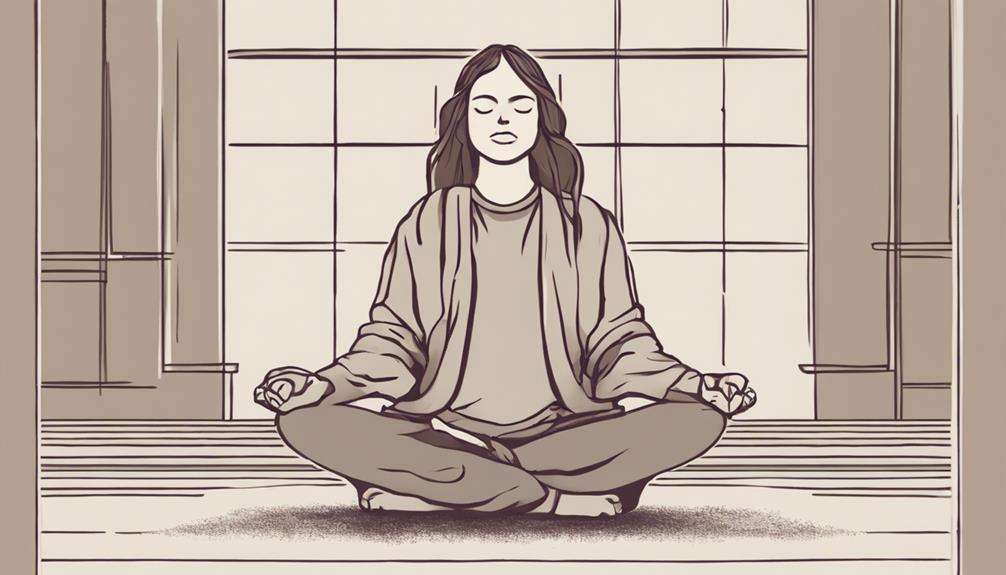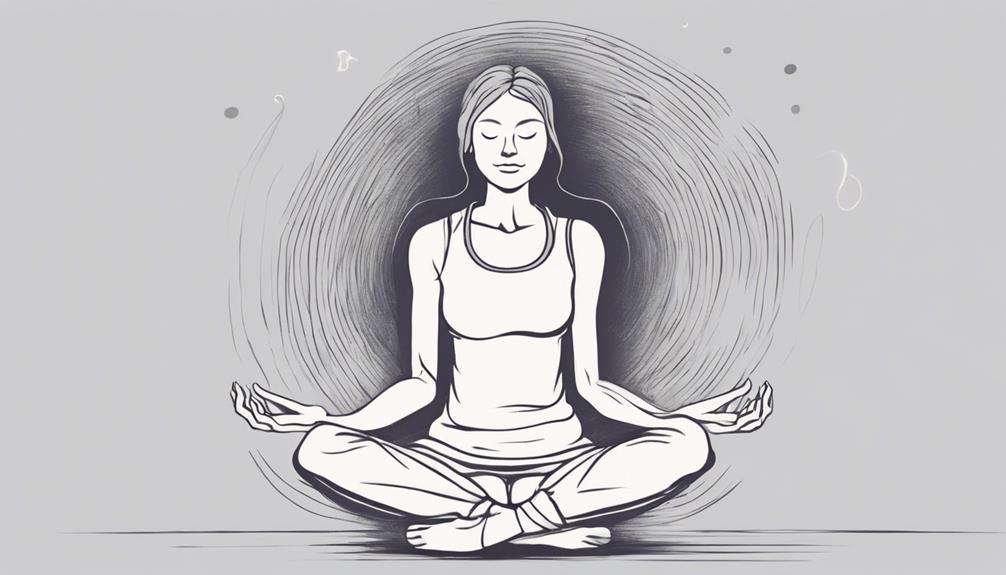Did you know that studies have shown a 30% reduction in pain levels among individuals who regularly practice mind-body techniques like mindfulness and meditation?
Exploring how these practices can positively impact your pain management journey might offer a new perspective on improving your overall well-being.
By delving into the ways in which your mind and body interact, you might discover powerful tools to help you navigate and alleviate discomfort more effectively.
Key Takeaways
- Mind-body connection techniques enhance pain relief through addressing mental and emotional aspects.
- Integrating mind-body practices with conventional treatments improves treatment outcomes.
- Mind-body techniques reduce reliance on pain medications and boost overall well-being.
- Strengthening mind-body awareness empowers individuals in self-managing chronic pain for long-term relief.
Understanding the Mind-Body Connection
When exploring pain relief strategies, understanding the mind-body connection plays a pivotal role in enhancing your overall well-being and managing discomfort effectively. The mind-body connection refers to how your mental and emotional states can influence the way you experience pain, especially in chronic conditions.
Research emphasizes that addressing the mental and emotional aspects of pain is essential for effective pain management. Stress, a common factor in exacerbating pain, can be managed through practices like meditation that strengthen the mind-body connection.
Additionally, social support plays a crucial role in how pain is perceived and coped with, further highlighting the importance of holistic approaches to pain relief. By acknowledging and nurturing the mind-body connection, you can better navigate the complexities of pain, integrating mental and emotional well-being with physical comfort for comprehensive pain management.
Understanding this connection allows for a more tailored and effective approach to pain relief that addresses both the physical and psychological dimensions of discomfort.
Benefits of Yoga for Pain Relief
Yoga offers a multitude of benefits for pain relief. Specific poses target areas of discomfort, while breathing techniques enhance relaxation. These practices improve physical aspects such as flexibility and strength, and also address the psychological aspects of pain.
Yoga Poses for Pain
To alleviate pain and enhance your overall well-being, consider incorporating beneficial yoga poses into your routine.
Yoga poses such as Child's Pose, Cat-Cow, and Downward Dog are particularly effective in relieving back pain and improving flexibility. Regular yoga practice has been proven to reduce symptoms of chronic pain, like lower back pain and arthritis discomfort.
By promoting relaxation and stress reduction, yoga helps alleviate muscle tension and pain throughout the body. Research indicates that yoga enhances pain management by increasing body awareness and improving posture, ultimately leading to decreased pain levels.
Integrating yoga into a comprehensive pain management plan can enhance physical function, mental well-being, and overall quality of life for individuals grappling with chronic pain.
Breathing Techniques Benefits
Activate your body's natural relaxation response and reduce pain perception by incorporating beneficial breathing techniques from yoga into your daily routine.
- Cognitive Benefits: Yoga breathing techniques promote cognitive awareness, helping you better understand and manage your pain signals.
- Guided Relaxation: Through guided breathing exercises, you can relax both your mind and body, easing the experience of chronic pain.
- Muscle Tension Relief: Controlled breathing in yoga releases muscle tension, offering relief from physical discomfort and pain.
- Mindfulness Practice: By focusing on breath awareness during yoga, you cultivate mindfulness, which empowers you to navigate pain sensations and emotional distress effectively.
Integrating these holistic approaches to breathing techniques not only aids in pain relief but also enhances your overall well-being.
Meditation Techniques for Pain Management

Utilizing mindfulness meditation techniques can significantly alleviate stress, depression, and pain intensity in individuals with chronic pain, promoting a state of relaxation and improved well-being. Mindfulness-Based Stress Reduction (MBSR), a form of mindfulness meditation, has shown remarkable success in reducing pain perception and emotional distress among chronic pain patients. By training individuals to focus on the present moment, mindfulness meditation helps cultivate a sense of calm, thereby reducing pain-related symptoms.
Research consistently supports the efficacy of mindfulness meditation in enhancing pain relief and overall well-being. To benefit from this practice, individuals can access various mindfulness meditation resources such as articles, apps, and guided sessions. These tools offer guidance and support, making it easier for individuals to incorporate mindfulness meditation into their pain management routines.
Embracing mindfulness meditation as part of your pain management strategy could lead to significant improvements in your well-being and quality of life.
Breathwork and Relaxation for Pain
Deep breathing techniques, a powerful tool for relaxation and pain management, can significantly alleviate discomfort and enhance well-being. When incorporating breathwork and relaxation techniques into your daily routine, consider the following:
- Relaxation Response Activation: Deep and slow breathing techniques trigger the body's relaxation response, reducing pain perception and promoting a sense of calmness.
- Physiological Benefits: Controlled breathing patterns help lower heart rate, decrease muscle tension, and enhance overall relaxation, aiding in pain management.
- Autonomic Nervous System Regulation: Practices like diaphragmatic breathing assist in regulating the autonomic nervous system, fostering a state of relaxation and reducing pain sensitivity.
- Enhanced Pain Relief: Research indicates that breathwork exercises improve oxygen flow, boost circulation, and facilitate tension release, contributing to pain relief and overall well-being.
Incorporating Mindfulness in Pain Relief

To enhance your pain relief journey, consider integrating mindfulness practices that have shown promising results in increasing pain tolerance and improving overall well-being. Mindfulness-based interventions, such as Mindfulness-Based Stress Reduction (MBSR), are particularly beneficial for individuals experiencing chronic pain.
These practices can help reduce pain intensity, enhance pain management, and cultivate a non-judgmental awareness of your pain experience. Research indicates that incorporating mindfulness techniques into your pain relief regimen can lead to a decrease in emotional distress and an improvement in sleep quality.
By developing a present-focused awareness through mindfulness meditation, you may find that your pain perception decreases, and your coping strategies improve. Mindfulness offers a holistic approach to chronic pain management, addressing not only the physical sensations but also the emotional and mental aspects of pain.
Embracing mindfulness in your pain relief journey can contribute to a greater sense of well-being and improved quality of life.
Integrating Mind-Body Therapies With Conventional Treatment
Enhancing your pain relief journey involves integrating mind-body therapies with conventional treatments to provide a more comprehensive approach that addresses both the physical and emotional aspects of managing pain. By combining these modalities, you can create a well-rounded strategy for treating chronic pain. Here are four key ways in which integrating mind-body therapies with conventional treatments can benefit chronic pain patients:
- Reducing Reliance on Medications: Integrating mind-body techniques such as mindfulness-based cognitive therapy can help decrease the need for pain medications, promoting a more sustainable approach to pain management.
- Holistic Treatment Approach: Integrative pain management recognizes the multifaceted nature of chronic pain and offers a holistic approach that considers the mind-body connection for more effective results.
- Improving Quality of Life: Research indicates that combining mind-body therapies with conventional treatments can significantly improve the overall quality of life for individuals dealing with chronic low back pain.
- Reducing Stress Levels: Cognitive behavioral therapy and other mind-body techniques can help in reducing stress, which is often a contributing factor to chronic pain conditions.
Frequently Asked Questions
How Do I Rewire My Brain to Not Feel Pain?
To rewire your brain and reduce pain perception, focus on cognitive restructuring through mindfulness practice. By actively reshaping neural pathways and enhancing emotional regulation, you can increase pain tolerance and modulate pain processing, benefiting from neuroplasticity training.
What Are the Mind-Body Approaches to Pain Management?
When managing pain, mind-body approaches like meditation, breathing exercises, and visualization can help. Techniques such as progressive relaxation, yoga therapy, and biofeedback training offer relief. Engage in hypnotherapy, guided imagery, mindfulness, and cognitive reframing for holistic well-being.
How Do You Train Your Mind to Lessen Pain?
You can train your mind to lessen pain by practicing meditation techniques, breathing exercises, visualization therapy, cognitive reframing, hypnosis benefits, progressive relaxation, guided imagery, mindfulness practice, positive affirmations, and biofeedback training. These methods empower you to manage pain effectively.
What Is the Connection Between Mind-Body and Pain?
When stress lingers, your mind-body bond heightens pain. Breathe. Meditate. Tune emotions. Feel your body. Restructure thoughts. Practice mindfulness. Surround yourself with support. Empower yourself with coping tools to soothe pain's grip. Your journey to relief starts within.
Conclusion
In conclusion, by harnessing the power of the mind-body connection through techniques like yoga, meditation, and mindfulness, you can unlock a world of pain relief and overall well-being.
These methods are like a soothing balm for your body, gently easing tension and promoting healing from within.
Embrace these practices with an open heart and mind, and watch as your pain diminishes, leaving you feeling empowered and in control of your own health journey.
You deserve to live a life free from unnecessary suffering.






